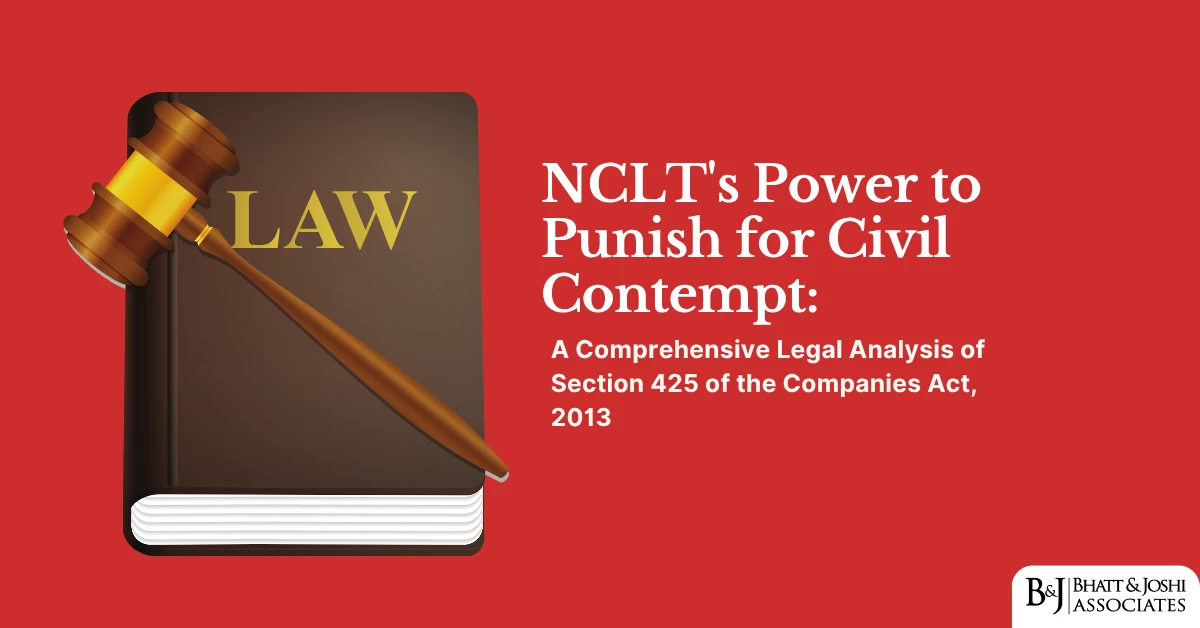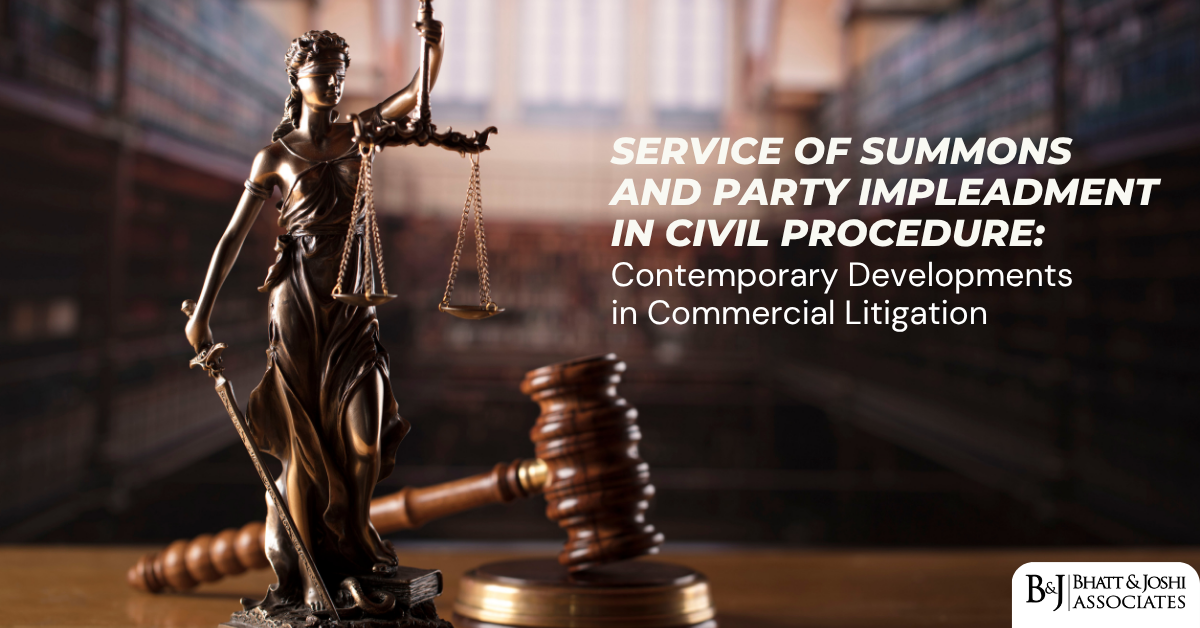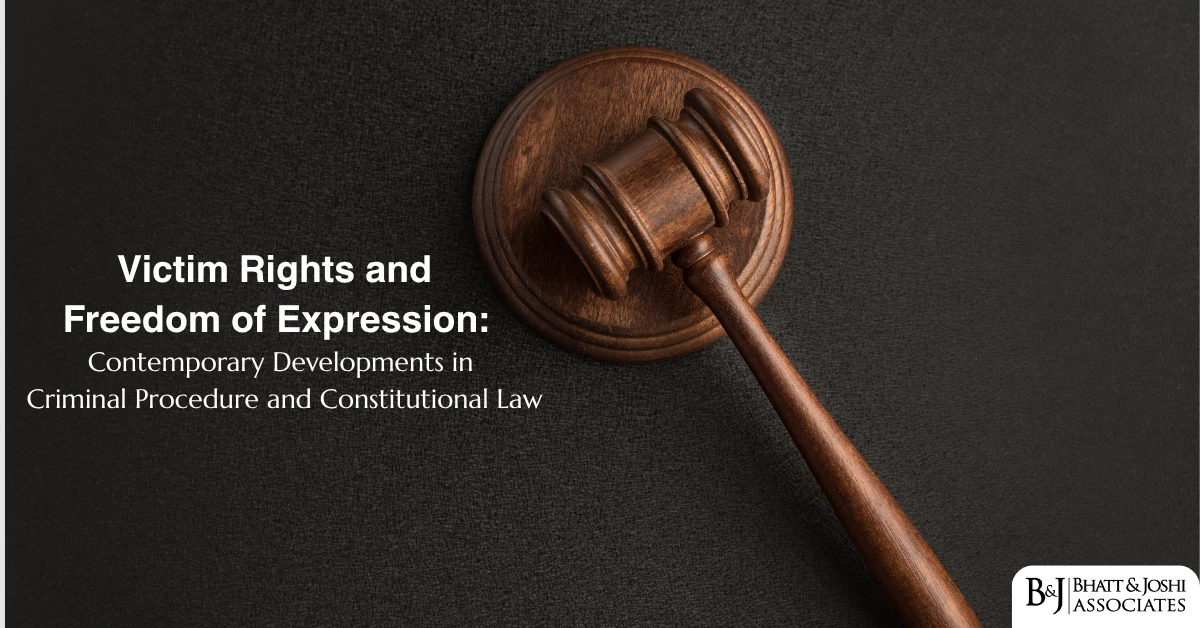Introduction
The Securitisation and Reconstruction of Financial Assets and Enforcement of Security Interest Act, 2002 (SARFAESI Act) represents a pivotal transformation in India’s debt recovery landscape, fundamentally altering how financial institutions approach non-performing asset (NPA) recovery. The inclusion of Non-Banking Financial Companies (NBFCs) within this framework through subsequent notifications has significantly expanded the statute’s reach and effectiveness in addressing India’s mounting debt recovery challenges.
The SARFAESI Act emerged from recommendations of various committees addressing the sluggish pace of debt recovery and escalating levels of NPAs in India’s financial sector. Originally designed to empower banks and financial institutions to recover defaulted loans without judicial intervention, the Act’s scope expanded considerably when NBFCs were brought within its ambit through executive notifications, marking a watershed moment in financial sector regulation.
Understanding the SARFAESI Act: Legislative Framework and Objectives
Historical Context and Legislative Intent
The SARFAESI Act was enacted to address critical deficiencies in India’s debt recovery mechanism. Prior to its enactment, financial institutions faced protracted litigation in civil courts, often taking decades to recover defaulted loans. The Act introduced three distinct mechanisms for debt recovery: securitisation of financial assets, asset reconstruction through specialised companies, and enforcement of security interest without court intervention.
The legislative intent was clear – provide financial institutions with expeditious, cost-effective remedies for NPA recovery while maintaining adequate safeguards for borrowers’ rights. The right of the secured creditor to enforce the security interest under the SARFAESI Act does not arise unless the account of the borrower has been classified as an NPA in the books of account of the secured creditor (banks or financial institutions) in accordance with the guidelines issued by the Reserve Bank of India (RBI) [1].
Fundamental Provisions and Scope
The Act applies to secured debts with outstanding amounts exceeding Rs. 1 lakh, classified as NPAs. However, certain categories are excluded from its purview, including agricultural land, assets not liable to attachment under Section 60 of the Code of Civil Procedure, 1908, and situations where remaining debt constitutes less than 20% of the original principal and interest.
The Act’s enforcement mechanism centres on Section 13, which empowers secured creditors to take possession of secured assets, manage borrower businesses, or transfer assets through lease, assignment, or sale. This power operates independently of judicial intervention, representing a significant departure from traditional debt recovery mechanisms.
Non-Banking Financial Companies: Definition and Regulatory Framework
Statutory Definition under the RBI Act, 1934
Non-Banking Financial Companies (NBFCs) derive their legal definition from Section 45-I(f) of the Reserve Bank of India Act, 1934. A Non-Banking Financial Company (NBFC) is a company registered under the Companies Act, 2013 (or under the Companies Act, 1956) and also registered under Section 45- IA of the Reserve Bank of India Act, 1934 and which provide banking services (without legally being a bank as they do not possess Banking License) or other specified services [2].
Non-Banking Financial Companies (NBFCs) encompass institutions engaged in financing activities, acquisition of securities, leasing, hire-purchase arrangements, insurance business, and chit fund management. However, entities primarily involved in agricultural activities, industrial operations, goods trading (excluding securities), or immovable property transactions are excluded from this definition.
Regulatory Requirements and Registration
Every NBFC must register with the RBI under Section 45-IA of the RBI Act, 1934, maintaining minimum net owned funds as prescribed by regulatory guidelines. As per section 45-IC NBFCs must transfer at least 20% of net profit every year to reserve fund. This fund should not be appropriated except for purpose specified by RBI [3]. This statutory requirement ensures financial stability and regulatory compliance within the NBFC sector.
The regulatory framework distinguishes NBFCs from banks while acknowledging their crucial role in India’s financial ecosystem. NBFCs cannot accept demand deposits or issue cheques payable to bearer, but they provide essential financial services including asset financing, investment banking, and loan syndication.
Evolution of NBFCs under SARFAESI: Notification Timeline and Legal Development
Pre-2020 Framework: Limited Application
Before February 24, 2020, SARFAESI Act application to Non-Banking Financial Companies (NBFCs) was severely restricted. Prior to February 24, 2020, in accordance with the previous notifications by the Central Government, if an NBFC had an asset size of INR 500 Crore and more and where the loan size was of INR 1 Crore and more, the NBFC was eligible to recover its debt under the SARFAESI ACT [4]. This high threshold limited the Act’s benefits to only the largest NBFCs, leaving smaller institutions without access to expeditious recovery mechanisms.
The restrictive approach reflected regulatory caution regarding NBFCs’ capacity to handle SARFAESI powers responsibly. However, increasing NPA levels across the financial sector necessitated broader application of the Act’s provisions to enhance overall system stability.
Landmark Notification of February 24, 2020
The transformative notification S.O. 856(E) dated February 24, 2020, fundamentally altered the SARFAESI landscape for NBFCs. The notification specifies that Nonbanking Financial companies as defined under RBI Act 1934, that have assets more than or equal to 100 crores, will be treated as Financial Institutions under SARFAESI Act and be entitled to enforce a security interest in secured debts that are of Rs.50 Lakhs or more [5].
This notification superseded earlier notifications dated August 5, 2016, August 27, 2018, and October 24, 2018, representing a comprehensive overhaul of NBFC eligibility criteria. The relaxation significantly expanded the pool of NBFCs capable of utilising SARFAESI provisions, reflecting the government’s commitment to strengthening debt recovery mechanisms across the financial sector.
Subsequent Amendment: February 12, 2021
Further liberalisation occurred through notification S.O. 652(E) dated February 12, 2021. In the said notification, for the words, “rupees fifty lakh and above” the words “rupees twenty lakh and above” shall be substituted [6]. This amendment reduced the minimum secured debt threshold from Rs. 50 lakhs to Rs. 20 lakhs, substantially broadening SARFAESI applicability and enabling NBFCs to recover smaller defaulted loans through the Act’s expeditious mechanisms.
Legal Framework: Section 2(m) and Financial Institution Status
Definition of Financial Institution
Section 2(m) of the SARFAESI Act defines “financial institution” through multiple sub-clauses, with Section 2(m)(iv) specifically empowering the Central Government to notify NBFCs as financial institutions. Section 2(1)(m) of the SARFAESI Act, 2002 empowers the Central Government to issue a notification, specifying any non-banking financial company (NBFC) as a “financial institution” for the purpose of the SARFAESI Act [7].
This provision creates a notification-based mechanism enabling the government to selectively include NBFCs within SARFAESI’s ambit based on specific criteria including asset size, operational history, and regulatory compliance. The approach ensures that only financially stable and adequately regulated NBFCs gain access to SARFAESI powers.
Current Eligibility Criteria
Following the 2020 and 2021 notifications, NBFCs qualify as financial institutions under SARFAESI if they satisfy specific criteria. They must be registered under Section 45-I(f) of the RBI Act, 1934, maintain assets worth Rs. 100 crores or more according to their latest audited balance sheet, and seek to enforce security interests in secured debts of Rs. 20 lakhs and above.
This framework balances accessibility with prudential regulation, ensuring that NBFCs with substantial operations and regulatory compliance can access SARFAESI benefits while maintaining system stability.
Enforcement Mechanisms: Section 13 and Procedural Framework
Section 13: Core Enforcement Provisions
Section 13 of the SARFAESI Act constitutes the primary enforcement mechanism available to NBFCs classified as financial institutions. Notwithstanding anything contained in section 69 or section 69-A of the Transfer of Property Act, 1882 (4 of 1882), any security interest created in favour of any secured creditor may be enforced, without the intervention of the Court or tribunal, by such creditor in accordance with the provisions of this Act [8].
This provision enables NBFCs to bypass traditional judicial proceedings, significantly reducing recovery timelines and associated costs. The enforcement power operates independently of other legal remedies, providing NBFCs with additional tools for debt recovery without prejudicing their rights under other statutes.
Demand Notice Requirements
The enforcement process begins with a mandatory demand notice under Section 13(2). The secured creditor must serve a 60-days-notice on the borrower demanding repayment of the amount due and specifying the borrower’s assets over which the secured creditor proposes to enforce its security interest [9]. This notice must provide detailed information regarding outstanding amounts and specific assets subject to enforcement action.
The notice period serves dual purposes: providing borrowers with final opportunity for voluntary compliance and ensuring procedural fairness in enforcement proceedings. NBFCs must strictly comply with notice requirements to maintain enforcement validity.
Enforcement Powers Post-Notice Period
Following expiry of the 60-day notice period without payment, NBFCs may exercise various enforcement powers under Section 13(4). These include the right to: Take the possession of the secured assets of the borrower. This includes the right to transfer by way of lease, assignment or sale for realising the secured asset. Take over the management of the business of the borrower [10].
These powers provide NBFCs with flexible recovery options tailored to specific circumstances. Asset possession and sale suit situations requiring immediate liquidation, while business management takeover may be appropriate where ongoing operations can generate recovery funds.
Regulatory Guidelines and Compliance Framework
RBI Guidelines for NBFC Operations
The Reserve Bank of India has established detailed guidelines governing NBFC operations under SARFAESI. These guidelines address asset classification, provisioning norms, and recovery procedures ensuring uniform application across the sector. NBFCs must maintain detailed records of enforcement actions, comply with reporting requirements, and ensure procedural compliance throughout recovery proceedings.
Regulatory oversight ensures that SARFAESI powers are exercised responsibly, protecting borrower interests while enabling effective debt recovery. The RBI monitors NBFC enforcement activities through periodic inspections and regulatory returns.
Prudential Norms and Asset Classification
NBFCs must follow RBI guidelines for asset classification and provisioning before initiating SARFAESI proceedings. Accounts must be classified as NPAs according to prescribed criteria, typically involving payment default exceeding 90 days. This classification triggers various regulatory requirements including enhanced monitoring and provisioning obligations.
The asset classification framework ensures that SARFAESI powers are invoked only in genuine default situations, preventing misuse while maintaining recovery effectiveness.
Judicial Interpretation and Case Law Development
Supreme Court Precedents
The Supreme Court has provided crucial guidance on SARFAESI application to NBFCs through several landmark judgments. In the case of M.D. Frozen Foods Exports Pvt. Ltd. v. Hero Fincorp Ltd., the Supreme Court held that there was no illegality in a non-banking finance company (“NBFC”) invoking the Securitisation and Reconstruction of Financial Assets and Enforcement of Security Interest Act, 2002 (“SARFAESI Act”) for recovery of loan arrears with respect to an account classified as non-performing asset (NPA) before the NBFC was notified under the Act [11].
This judgment established that SARFAESI applicability extends to loans originated before NBFCs received notification as financial institutions, provided the debt remains outstanding when enforcement is initiated. The decision significantly expanded NBFCs’ recovery options for historical portfolios.
High Court Interpretations
Various High Courts have addressed specific aspects of NBFC operations under SARFAESI. While arbitration is an adjudicatory process, the proceedings under the SARFAESI Act are enforcement proceedings. It is only after the adjudicatory process of arbitration in the present case leads to determination and crystallization of the debt due to the petitioner, that the petitioner would be able to resort to the enforcement process under the SARFAESI Act [12].
This interpretation clarifies that NBFCs can pursue both arbitration and SARFAESI proceedings simultaneously, as they serve different purposes within the debt recovery framework. Arbitration determines liability while SARFAESI enables enforcement, creating complementary rather than competing remedies.
Housing Finance Companies: Special Considerations
Recent judicial decisions have addressed the relationship between Housing Finance Companies (HFCs) and general NBFC regulations under SARFAESI. The court held that HFCs are governed by the specific notifications made under the NHB Act and not the generic notifications governing NBFCs, made under the RBI Act. Accordingly, the NBFC Notification issued in respect of NBFCs shall not be applicable to the Respondent and the Respondent was entitled to recover the loan by resorting to provisions of the SARFAESI Act, irrespective of the pecuniary threshold of Rs. 20,00,000 (Rupees twenty lac) applicable to NBFCs [13].
This distinction recognises the special regulatory framework governing HFCs under the National Housing Bank Act, 1987, creating separate enforcement criteria for these specialised institutions.
Procedural Requirements and Documentation
Notice Provisions and Service Requirements
SARFAESI enforcement requires strict compliance with notice provisions outlined in the Security Interest (Enforcement) Rules, 2002. The service of demand notice as referred to in sub-section (2) of section 13 of the Act shall be made by delivering including hand delivery or transmitting at the place where the borrower or his agent, empowered to accept the notice or documents on behalf of the borrower, actually and voluntarily resides or carries on business or personally works for gain, by registered post with acknowledgement due, addressed to the borrower or his agent empowered to accept the service or by Speed Post or by courier or by any other means of transmission of documents like fax message or electronic mail service [14].
Alternative service methods are available when standard service proves ineffective. Where the authorised officer has reason to believe that the borrower is avoiding service, notice may be affixed on the outer door or conspicuous part of the borrower’s residence or business premises.
Asset Possession and Management
Following valid enforcement, NBFCs may take possession of secured assets through authorised officers. Where the possession of the secured assets to be taken by the secured creditor are movable property in possession of the borrower, the authorised officer shall take possession of such movable property in the presence of two witnesses after Panchnama drawn and signed by the witnesses [15].
The possession process requires detailed documentation including inventory preparation and delivery of copies to borrowers or entitled persons. This procedural framework ensures transparency while protecting both creditor and borrower interests.
Asset Reconstruction and Securitisation Mechanisms
Asset Reconstruction Companies (ARCs)
The SARFAESI Act facilitates asset reconstruction through specialised Asset Reconstruction Companies (ARCs). These institutions purchase non-performing assets from NBFCs, enabling capital recovery while transferring recovery responsibilities to specialist entities. ARCs operate under RBI regulation, ensuring professional standards in asset management and recovery operations.
NBFCs can sell entire loan portfolios or individual accounts to ARCs, receiving immediate consideration in exchange for future collection rights. This mechanism provides NBFCs with capital recycling opportunities while maintaining system-wide recovery effectiveness.
Securitisation Framework
Securitisation enables NBFCs to convert illiquid loan assets into tradeable securities. The process involves pooling similar assets and issuing securities backed by cash flows from the underlying loan portfolio. Qualified Institutional Buyers (QIBs) can invest in these securities, providing NBFCs with alternative funding sources.
The securitisation framework requires compliance with detailed regulatory guidelines covering asset quality, structural features, and investor protection measures. These requirements ensure market integrity while enabling innovative funding mechanisms for NBFC operations.
Borrower Protection Mechanisms and Appeal Rights
Section 17 Appeals to Debt Recovery Tribunals
The SARFAESI Act provides borrowers with specific appeal mechanisms against NBFC enforcement actions. Section 17 permits appeals to Debt Recovery Tribunals (DRT) challenging enforcement validity on prescribed grounds including procedural irregularities, disputed debt amounts, or security interest defects.
Appeal proceedings do not automatically stay enforcement actions, though DRTs may grant interim relief in appropriate circumstances. This framework balances creditor enforcement rights with borrower protection, ensuring access to justice while maintaining recovery effectiveness.
Constitutional Safeguards
The Supreme Court has consistently upheld SARFAESI’s constitutional validity while emphasising procedural safeguards. The Act’s provisions must be interpreted consistently with constitutional principles including due process, property rights, and access to justice. Courts have refused to permit enforcement where fundamental procedural requirements are not satisfied.
These safeguards ensure that SARFAESI powers, while extensive, operate within constitutional bounds and respect fundamental rights. NBFCs must comply with both statutory requirements and constitutional principles when exercising enforcement powers.
Challenges and Limitations in Implementation
Coordination with Other Recovery Mechanisms
NBFCs often face challenges coordinating SARFAESI enforcement with other recovery mechanisms including civil suits, arbitration proceedings, and criminal complaints. While these remedies are generally cumulative rather than alternative, practical coordination issues can arise regarding timing, strategy, and resource allocation.
Recent judicial decisions have clarified that SARFAESI proceedings can proceed simultaneously with other recovery actions, provided there is no double recovery. This framework enables NBFCs to pursue multiple recovery strategies while preventing unjust enrichment.
Debt Recovery Tribunal Capacity
The expansion of SARFAESI applicability to numerous Non-Banking Financial Companies (NBFCs) has increased the caseload before Debt Recovery Tribunals. While rights have been conferred to a larger pool of NBFCs to enforce their security interest under the SARFAESI Act, these NBFCs have not been given any powers to file suits for recovery before the Debts Recovery Tribunal under the Recovery of Debts and Bankruptcy Act, 1993 [16].
This limitation creates procedural complexities when NBFCs seek to recover shortfall amounts following asset realisation. The inability to directly access DRT proceedings for deficit recovery may require alternative legal strategies or coordination with other financial institutions having DRT access.
Regulatory Framework for Asset Size and Threshold Requirements
Current Asset Size Criteria
The notification framework establishes clear asset size requirements for NBFC eligibility under SARFAESI. NBFCs must maintain assets worth Rs. 100 crores or more based on their latest audited balance sheet to qualify as financial institutions under the Act. This threshold ensures that only substantially sized NBFCs with adequate operational capacity can access SARFAESI benefits.
The asset size requirement reflects regulatory emphasis on institutional capacity and stability. Smaller NBFCs lacking substantial asset bases may not possess the infrastructure necessary for effective SARFAESI enforcement, justifying the threshold approach.
Secured Debt Threshold Evolution
The secured debt threshold has undergone significant reduction from the original Rs. 1 crore requirement for NBFCs to the current Rs. 20 lakh minimum. This evolution reflects policy recognition that smaller debt amounts require efficient recovery mechanisms, particularly given the prevalence of medium and small-ticket lending in NBFC operations.
The threshold reduction substantially expands SARFAESI applicability while maintaining focus on secured lending. Unsecured debts remain outside SARFAESI scope, preserving the Act’s fundamental character as a secured creditor remedy.
Compliance and Risk Management Framework
Internal Compliance Systems
Non-Banking Financial Companies (NBFCs) exercising SARFAESI powers must establish robust internal compliance systems ensuring adherence to statutory and regulatory requirements. These systems should address legal compliance, procedural documentation, borrower communication, and regulatory reporting obligations.
Effective compliance systems reduce legal risks while enhancing enforcement effectiveness. Regular compliance audits and staff training programs ensure consistent application of SARFAESI procedures across NBFC operations.
Risk Assessment and Mitigation
SARFAESI enforcement involves various legal and operational risks requiring systematic assessment and mitigation strategies. Legal risks include procedural challenges, borrower appeals, and regulatory scrutiny. Operational risks encompass asset valuation, disposal timing, and market conditions affecting recovery outcomes.
NBFCs should develop comprehensive risk management frameworks addressing these challenges through appropriate policies, procedures, and monitoring mechanisms. Regular risk assessment enables proactive identification and mitigation of potential enforcement complications.
Future Directions and Policy Implications
Technology Integration and Digital Processes
The integration of technology in SARFAESI enforcement offers significant opportunities for enhancing efficiency and transparency. Digital notice service, online asset auctions, and electronic documentation can reduce processing times while improving accessibility for all stakeholders.
Regulatory frameworks must evolve to accommodate technological innovations while maintaining procedural integrity and borrower protection. The adoption of digital processes requires careful consideration of authentication, security, and access issues.
Harmonisation with Insolvency and Bankruptcy Code
The relationship between SARFAESI and the Insolvency and Bankruptcy Code, 2016 (IBC) requires careful consideration in NBFC enforcement strategies. In view of the provisions of Section 14(1)(c) of the IBC, which have overriding effect over any other law, any action to foreclose, recover or enforce any security interest created by the Corporate Debtor in respect of its property including any action under the SARFAESI Act is prohibited [17].
This interaction necessitates coordination between enforcement mechanisms and may require NBFCs to participate in insolvency proceedings rather than pursuing independent SARFAESI enforcement in appropriate circumstances.
Conclusion
The inclusion of Non-Banking Financial Companies (NBFCs) within the SARFAESI framework represents a fundamental transformation in India’s debt recovery landscape. Through progressive notifications reducing asset size and secured debt thresholds, the regulatory framework has substantially expanded access to expeditious enforcement mechanisms while maintaining essential safeguards.
The legal framework governing Non-Banking Financial Companies (NBFCs) under SARFAESI reflects careful balancing of creditor rights and borrower protection through procedural requirements, appeal mechanisms, and judicial oversight. Supreme Court and High Court decisions have provided crucial guidance on enforcement scope, procedural compliance, and coordination with other recovery mechanisms.
Current challenges including DRT capacity constraints and coordination with insolvency proceedings require continued attention from policymakers and practitioners. The evolution toward digital processes and technological integration offers promising opportunities for enhancing enforcement effectiveness while maintaining transparency and accessibility.
Non-Banking Financial Companies must develop sophisticated compliance and risk management systems to effectively utilise SARFAESI powers while managing associated legal and operational risks. The framework’s continued evolution will likely address emerging challenges while preserving the Act’s fundamental objectives of expeditious debt recovery and financial system stability.
The SARFAESI Act’s application to NBFCs represents a mature regulatory framework balancing efficiency with fairness, providing essential tools for debt recovery while respecting constitutional principles and borrower rights. As India’s financial sector continues evolving, this framework will remain central to effective debt recovery and financial stability objectives.
References
[1] TaxGuru. (2022). Overview of SARFAESI Act 2002 & Note on process of Enforcement of Security Interest under Section 13. Retrieved from https://taxguru.in/corporate-law/overview-sarfaesi-act-2002-note-process-enforcement-security-interest-section-13.html
[2] NBFC Takeover. (2024). Section 45-IC Reserve fund | RBI Norms of 45IC in India. Retrieved from https://nbfctakeover.com/rbi-norms-of-45ic/
[3] Reserve Fund | The Reserve Bank of India Act, 1934. Retrieved from https://kanoongpt.in/bare-acts/the-reserve-bank-of-india-act-1934/chapter-iii-b-section-45-ic-f696f94a11af5444
[4] HSA Legal. (2020). Relaxation to NBFCs for taking action under the SARFAESI Act: Bane or Boon? Retrieved from https://hsalegal.com/article/relaxation-to-nbfcs-for-taking-action-under-the-sarfaesi-act-bane-or-boon/
[5] IndiaFilings. (2020). Sarfaesi Act – NBFCs Specified as Financial Institutions. Retrieved from https://www.indiafilings.com/learn/sarfaesi-act-nbfcs-specified-as-financial-institutions/
[6] IBC Laws. (2021). Notification No. – S.O. 652(E) dated 12.02.2021 – SARFAESI Act 2002. Retrieved from https://ibclaw.in/notification-no-s-o-652e-dated-12-02-2021-rdb-act-1993/
[7] CA Cult. (2021). NBFCs as Financial Institutions under Section 2(1)(m) of the SARFAESI Act, 2002. Retrieved from https://cacult.com/nbfcs-as-financial-institutions-under-section-21m-of-the-sarfaesi-act-2002/
[8] Indian Kanoon. (n.d.). Section 13 in The Securitisation And Reconstruction Of Financial Assets And Enforcement Of Security Interest Act, 2002. Retrieved from https://indiankanoon.org/doc/152603276/
[9] TaxGuru. (2022). Overview of SARFAESI Act 2002 & Note on process of Enforcement of Security Interest under Section 13. Retrieved from https://taxguru.in/corporate-law/overview-sarfaesi-act-2002-note-process-enforcement-security-interest-section-13.html
[10] TaxGuru. (2022). Overview of SARFAESI Act 2002 & Note on process of Enforcement of Security Interest under Section 13. Retrieved from https://taxguru.in/corporate-law/overview-sarfaesi-act-2002-note-process-enforcement-security-interest-section-13.html
[11] IndiaCorpLaw. (2017). Application Under SARFAESI: Supreme Court’s Liberal Approach. Retrieved from https://indiacorplaw.in/2017/10/application-sarfaesi-supreme-courts-liberal-approach.html
[12] IBC Laws. (2022). Tata Motors Finance Solutions Ltd. Vs. Naushad Khan c/o. Nazbul Hoda Khan – Bombay High Court. Retrieved from https://ibclaw.in/tata-motors-finance-solutions-ltd-vs-naushad-khan-c-o-nazbul-hoda-khan-bombay-high-court/
[13] Argus Partners. (2024). Pecuniary threshold applicable on NBFCs under SARFAESI Act not applicable to HFCs. Retrieved from https://www.argus-p.com/updates/updates/pecuniary-threshold-applicable-on-nbfcs-under-sarfaesi-act-not-applicable-to-hfcs/
[14] IBC Laws. (n.d.). The SARFAESI Security Interest (Enforcement) Rules, 2002. Retrieved from https://ibclaw.in/sarfaesi-the-security-interest-enforcement-rules-2002/
[15] IBC Laws. (n.d.). The SARFAESI Security Interest (Enforcement) Rules, 2002. Retrieved from https://ibclaw.in/sarfaesi-the-security-interest-enforcement-rules-2002/
[16] HSA Legal. (2020). Relaxation to NBFCs for taking action under the SARFAESI Act: Bane or Boon? Retrieved from https://hsalegal.com/article/relaxation-to-nbfcs-for-taking-action-under-the-sarfaesi-act-bane-or-boon/
[17] IBC Laws. (2023). Important Supreme Court and High Court Judgments of 2022 on SARAFESI Act, 2002/ Recovery of Debts and Bankruptcy Act, 1993. Retrieved from https://ibclaw.in/important-supreme-court-and-high-court-judgments-of-2022-on-sarafesi-act-2002-recovery-of-debts-and-bankruptcy-act-1993/
Download Full Judgement
- https://bhattandjoshiassociates.s3.ap-south-1.amazonaws.com/judgements/A2002-54.pdf
- https://bhattandjoshiassociates.s3.ap-south-1.amazonaws.com/judgements/showfile.pdf
- https://bhattandjoshiassociates.s3.ap-south-1.amazonaws.com/judgements/notification-no-s-o-652e-dated-12-02-2021-rdb-act-1993.pdf














